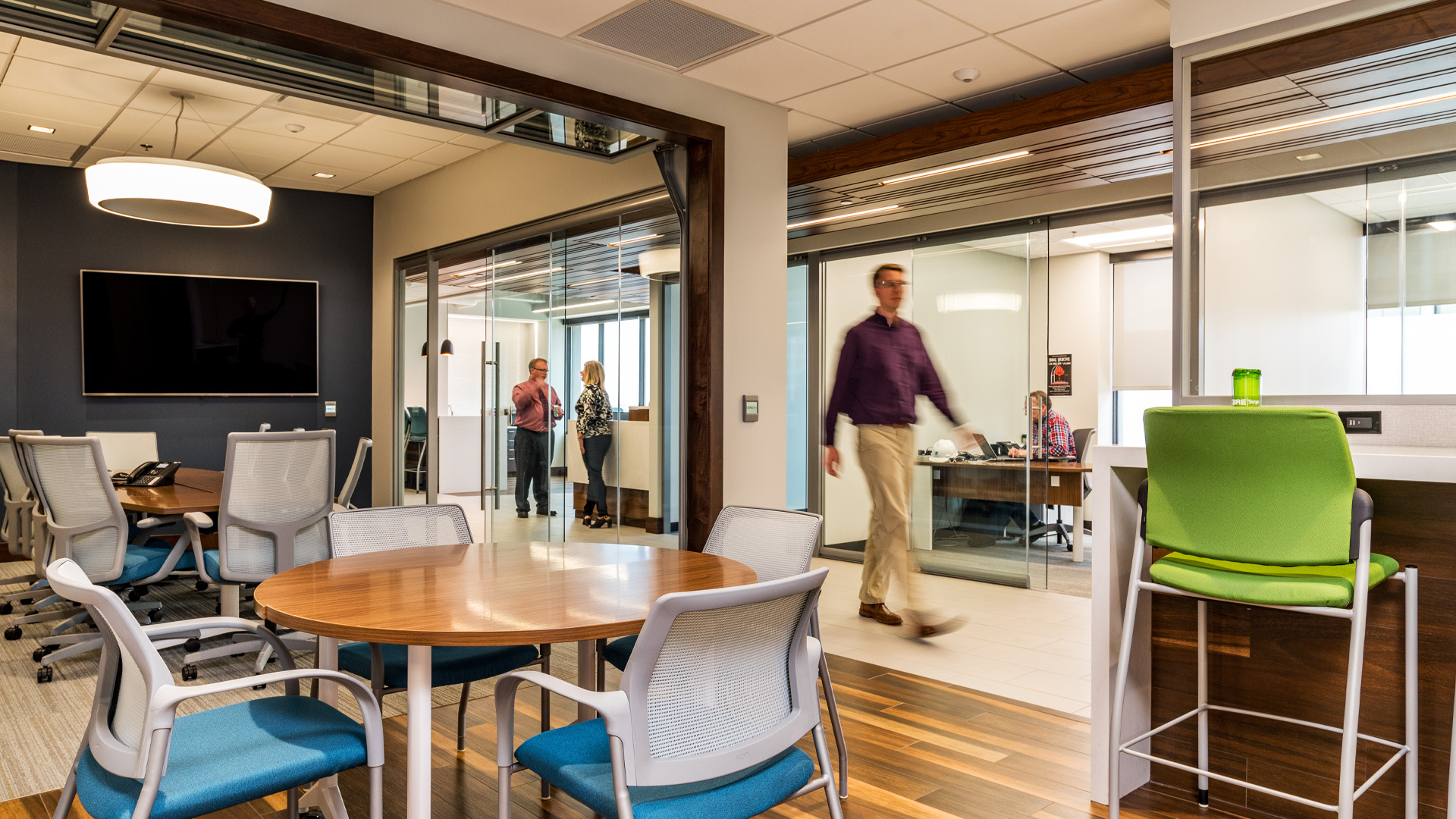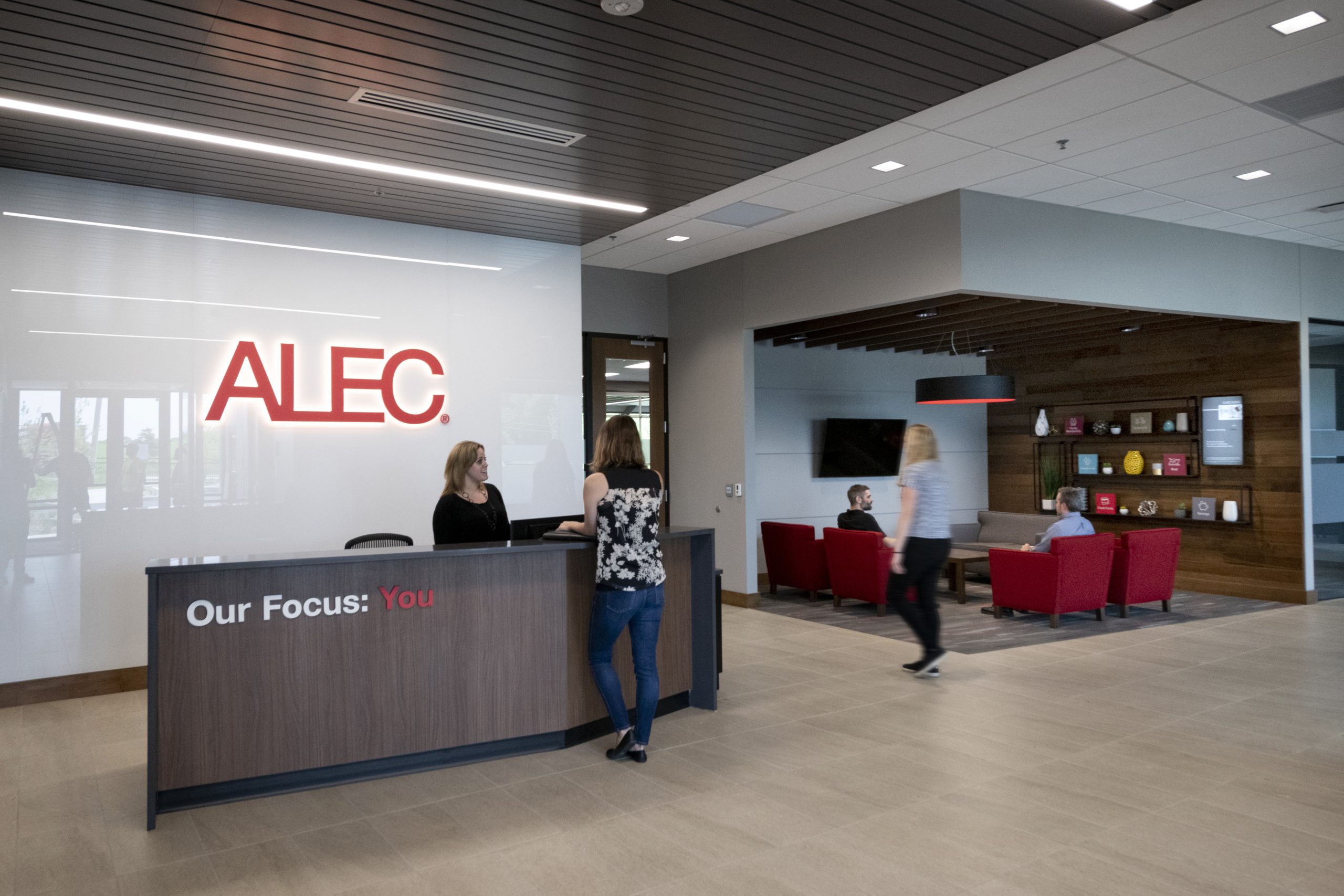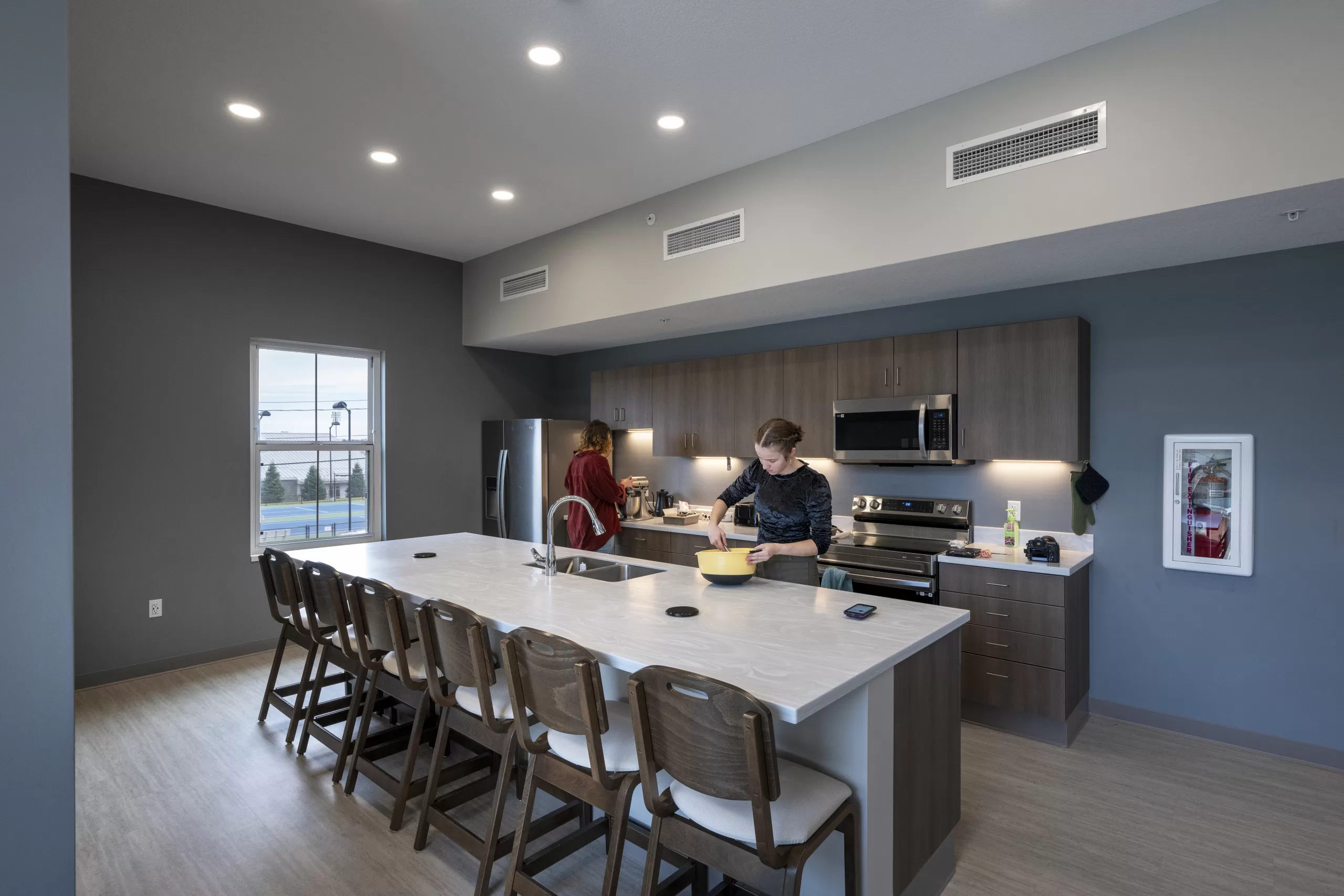WELL Building Standard, Well Employees
By Hannah Arthur, RA, LEED Green Associate, WELL AP Alex Kircher, RA, WELL AP Kelli Warner
September 5, 2024Post Tagged in
 |
Design Collaborative’s team of designers incorporate WELL design principles that influence employees’ well-being.What does it mean to be well? Most people would answer that question by considering a person’s physical or mental health. For the team at Design Collaborative, WELLness means more than that. |


